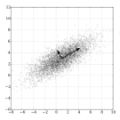A central use case for the Internet of Things (IoT) is the adoption of sensors to monitor physical processes, such as the environment and industrial manufacturing processes, where they provide data for predictive maintenance, anomaly detection, or similar. The sensor devices are typically resource-constrained in terms of computation and power, and need to rely on cloud or edge computing for data processing. However, the capacity of the wireless link and their power constraints limit the amount of data that can be transmitted to the cloud. While this is not problematic for the monitoring of slowly varying processes such as temperature, it is more problematic for complex signals such as those captured by vibration and acoustic sensors. In this paper, we consider the specific problem of remote anomaly detection based on signals that fall into the latter category over wireless channels with resource-constrained sensors. We study the impact of source coding on the detection accuracy with both an anomaly detector based on Principal Component Analysis (PCA) and one based on an autoencoder. We show that the coded transmission is beneficial when the signal-to-noise ratio (SNR) of the channel is low, while uncoded transmission performs best in the high SNR regime.
翻译:对物联网(IoT)来说,一个中央使用实例是采用传感器来监测物理过程,例如环境和工业制造过程,它们为预测性维护、异常现象检测或类似过程提供数据。传感器装置通常在计算和功率方面受到资源限制,需要依靠云或边缘计算来进行数据处理。然而,无线链接的能力及其功率限制可以传送到云中的数据量。虽然这对监测缓慢变化的过程,例如温度来说没有问题,但是对于震动和声响传感器所捕捉的复杂信号来说,它更成问题。在本文中,我们考虑到基于无线频道上无线传感器所及信号的远程异常探测的具体问题。我们研究源对探测准确性的影响,即根据主元件分析(PCA)和自动电解码器(Outoencoder)与异常探测器进行编码。我们表明,当频道的信号对音频比(SNR)低时,编码传输是有利的,而未编码传输在高NSR系统中表现最佳。




